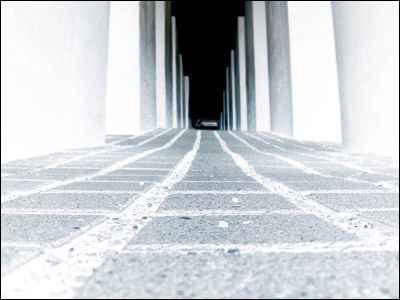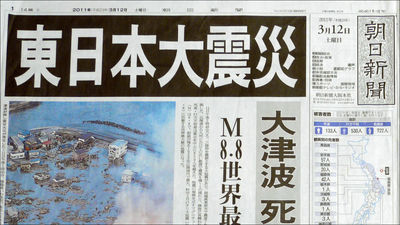Photos showing Japanese appearance from Taisho 6 to Showa 25 are on the net

Japan from Taisho to Showa has passed through a time that can be called the most turbulent era in its history. A valuable photograph that captures the scenery of such a period is a site that archives a lot of various past pictures of the worldFlashbakIt is open to the public.
Tokyo, Japan 1917-1950: Rare Images Of Love, Loathing And Life | Flashbak
http://flashbak.com/tokyo-japan-1917-1950-rare-images-of-love-loathing-and-life-24983/
A total of 82 photos are published on the site. I picked up some from them.
1917 (Taisho 6 years) January 1: Tokyo landscape. A detailed place is not stated and it says "a typical street scenery". The car that is shownT type FordIs it?
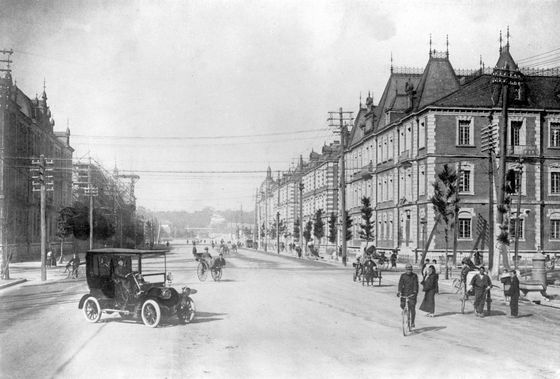
1923 (Taisho 12 year) September 1: It occurred at 11:58 am the same dayGreat Kanto EarthquakeThe state of Tokyo and Akasaka, right after. It is thought that wooden buildings were almost all, and you can see the state that it is greatly inclined under the shake. To the sign displayed on the right is "Akasaka(Police force)GuardianshipIt seems that it is written.

December 27, 1940 (Showa 15):Japan-Germany Italian allianceChildren of Japan, Germany, Italy celebrating the conclusion of. On the podium, the Minister of Education of the time committed suicide by poisoning after being nominated as a Class-A war criminal suspectKunihiko HashidaMr. and I was the mayor of Tokyo at that timeKoji OkuboI can see Mr. figure.
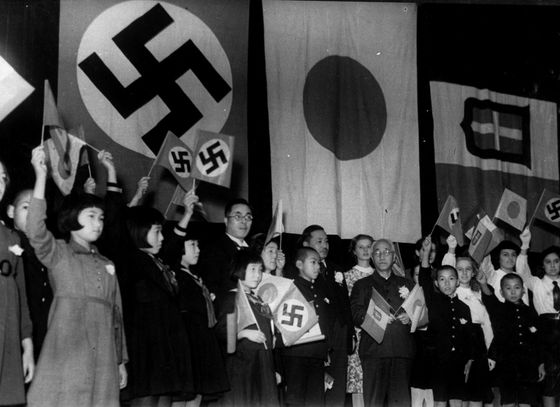
1945 (Showa 20) March 10:Tokyo Air raidThe state of the Sumida river basin under the air raid. The reason for the air raids is that the US military has said that there were many military plants in the watershed, but about 100,000 citizens were sacrificed due to this air raid, and it was recorded that the number of sufferers exceeded 1 million It is.
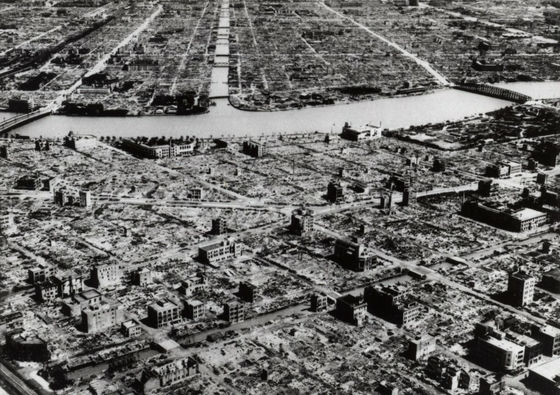
1945 (Showa 20) September 10: In Japan that came to the end of the war in August, postwar processing was done. The woman reflected in the photograph is a mysterious female announcer who was conducting propaganda broadcasting for Allied Army such as Iva, Toguri, Dakino who interviewed an American journalist, another name such as the United States carried out during wartime "Tokyo RoseOne of the people.
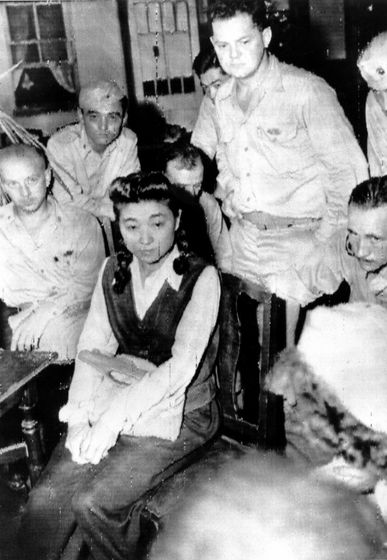
1945 (Showa 20) September 11: Tojo Hideki, Former Army Minister and General Chief of Staff, who attempted to commit suicide as a war criminal just before being arrested. The US military, who had predicted suicide, was prepared to prepare an ambulance beforehand. When you hear a gunshot, you stepped all at once and treated, Mr. Tojo miraculously gets a nine-year-old life. Later in the Tokyo Tribunal, it was prosecuted as a Class-A war criminal, and hanging is being executed.
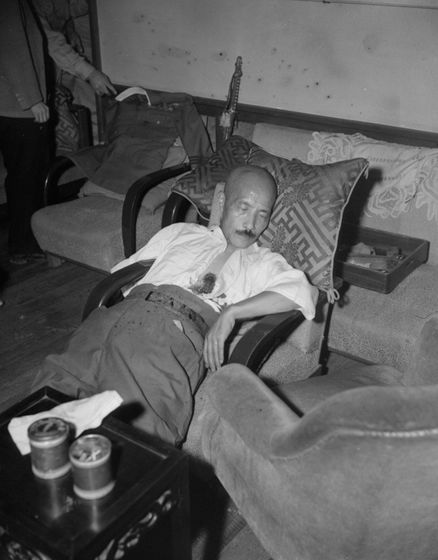
1945 (Showa 20) November 11: The figure of the Emperor Showa at the train heading for Ise Shrine for the end of war report. Like the class chapter removed from the military uniform of the navy "Emperor clothingI'm wearing a costume called.
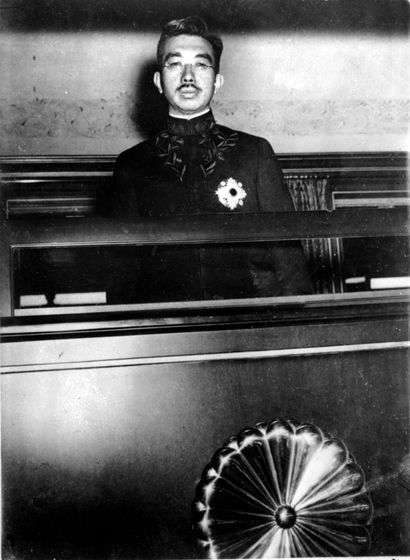
1946 (Showa 21) February 12: A Japanese woman who writes a character with "THIS IS TO TOYO" on the snow piled up in a car.
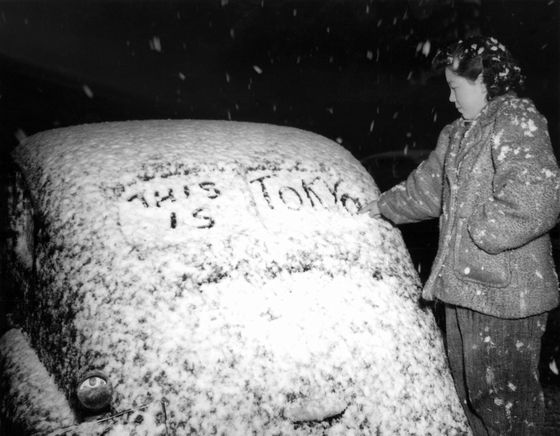
1946 (Showa 21) March 29: Three women who were dancers of the Imperial Theater wearing the swimsuit at the time. A glimpse of the spreading fashion that would not have been thought about during wartime.
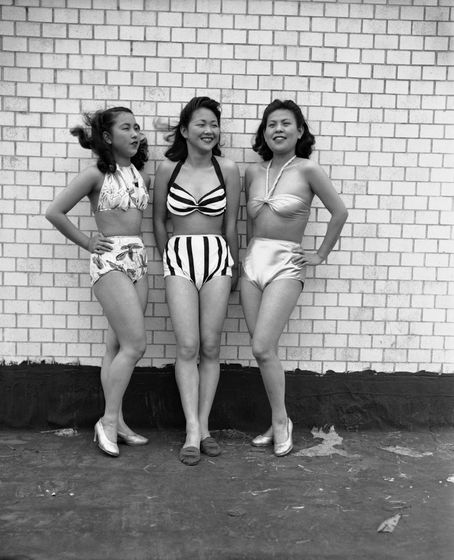
1946 (Showa 21) June 10: GHQ facility built in front of the Imperial Palace.
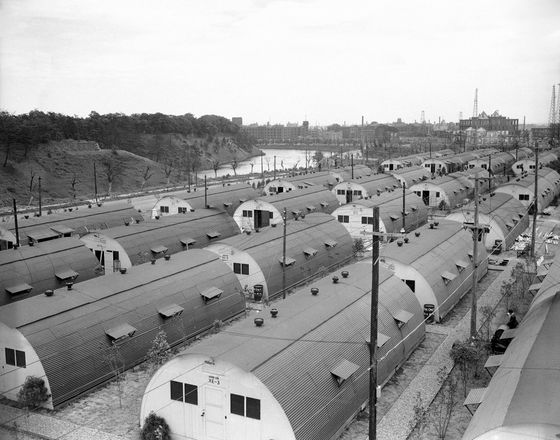
1946 (Showa 21) October 8: The appearance of a Japanese woman who is baptized Christianity in kimono shape.

1947 (Showa 22): The figure of Ching Dong shop is returning to town.
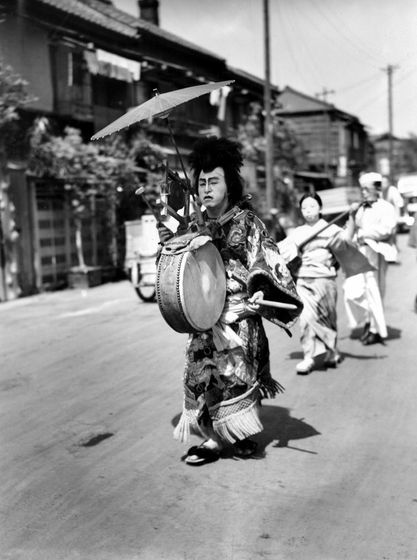
1947 (Showa 22) January 28: 4 men and 8 women who participate in collective matches in Ueno, Tokyo. It seems that it was because the population ratio was more for women at that time.

1949 (Showa 24) March 25: Director who receives bouquets from mascot characters at the beginning of professional baseball season. It is cute that leather shoes are visible at the feet of the character.
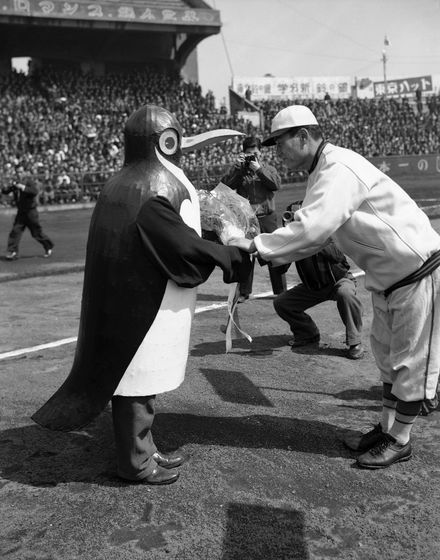
1950 (Showa 25) April: Drive the limited train "Tsubame"JNR EF 55 electric locomotive. A streamlined design that was prevalent at the time was adopted and it is also known as the nickname of "Moomin". However, this is a nickname that was attached later in the year, and the active era was said to have been called "shoes" or "hippopotamus".

In addition to these Japanese photographs, it is possible to see the old photos of each country on the site. Since images of old-fashioned advertisements are also posted, it seems to be interesting as a document.
Flashbak
http://flashbak.com/

Related Posts:
